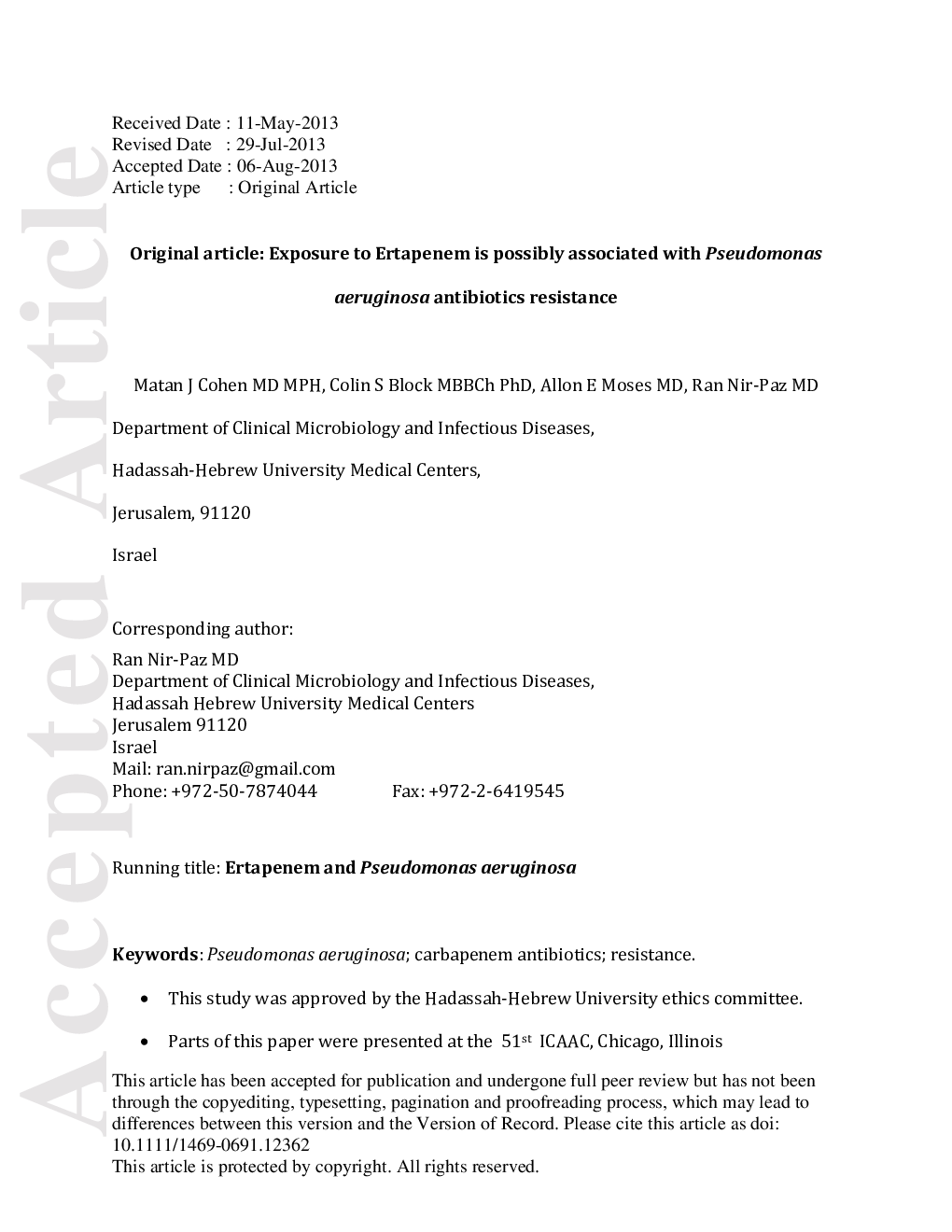| Article ID | Journal | Published Year | Pages | File Type |
|---|---|---|---|---|
| 6130449 | Clinical Microbiology and Infection | 2014 | 25 Pages |
Abstract
The role of antibiotic exposure in the evolution and emergence of resistance is challenging to assess. We used carbapenem-resistant Pseudomonas aeruginosa (PA) phenotypes to assess possible factors that are associated with the occurrence and prognosis of such a phenotype and to examine the possible contribution of antibiotic exposure to the evolution of antimicrobial resistance. We conducted a nested case-control study. Cases were defined as patients from whom carbapenem-resistant ureidopenicillin-sensitive PA (CRUS-PA) was isolated; matched controls were PA patients who did not have isolation of CRUS-PA. We analysed potential predictors of CRUS-PA isolation and assessed their clinical significance (mortality and eventual isolation of pan-resistant PA), taking into account antibiotic exposures. We matched 800 case-control pairs. Case patients were more likely to have been exposed to anti-PA carbapenems (OR = 6.9; 95% CI, 2.5-18.6). This finding did not apply to the administration of other antibiotics. The mortality among CRUS-PA patients was similar to that of the controls (HR, 0.8 95%; CI, 0.6-1.1). Subsequent isolation of pan-resistant PA was more frequent among case patients compared with non-pan-resistant controls (p-value <0.05). Among cases, the risk of eventual pan-resistant PA isolation was increased in ertapenem recipients, only after and not prior to the index specimen date (HR, 1.9, 95%; CI, 1.01-3.4). Therefore we suggest that the CRUS-PA phenotype may represent pan beta-lactam resistance and that antibiotic exposure is associated with evolution of PA resistance phenotypes. We demonstrate a novel association of ertapenem with sequentially appearing PA resistance patterns.
Related Topics
Life Sciences
Immunology and Microbiology
Microbiology
Authors
M.J. Cohen, C.S. Block, A.E. Moses, R. Nir-Paz,
